Filsafat
We believe that God call us to be creatures who communicate through language, based on His example of communicating with us through His revealed word, the Bible. In the Bible, God employ many forms of literature, including stories and poetry, to instruct us in His character and expectations us. Therefore we believe it is important for students to learn to communicate clearly and effectively through language, as well as to develop a love of God’s Word and an appreciation for the gift of the spoken and written word.
Students should master grammar, spelling, and other writing conventions, as well as learn how to comprehend spoken and written words, to think critically about them, and to respond clearly and thoughtfully through writing and discussion.
Course Objective
The Kindergarten Handwriting program is an active, dynamic way of teaching handwriting. (NLL) The program incorporates three developmentally based stages which are: Imitation, Copying, and Independent writing. The use of wooden letter pieces, small individual chalk boards and dynamic demonstrations help impart learning to the students. Visual, auditory and Kinesthetic learning styles. (NLL, ET) The children will learn the proper formation of both capital and lower case letters. They will also know the appropriate size and position of letters on a line. Students will learn that writing is systematic and orderly and that God made writing logical and easy to learn. (RUC) Through writing we can communicate with others (DC) and learn what God has written (SCW).
Materials
Handwriting Without Tears Teacher’s Guide and Student Book
Handwriting Without Tears Wooden Letter piece’s, chalk boards and blue letter mats
Time Allotment
15 minutes per day, 5 days a week
Course Content
- Correct posture and pencil grip
- Capital letters
- Number 1 – 10
- Lower case letters
Evaluation
- Written assessment
- Written letter games
- Daily work


